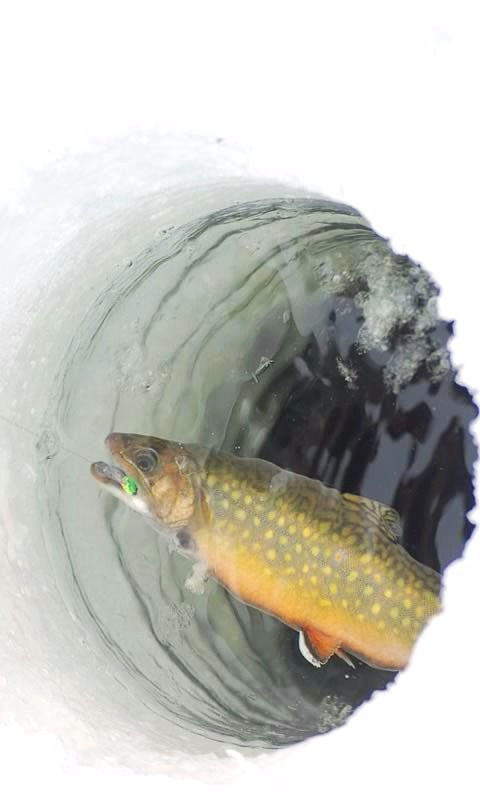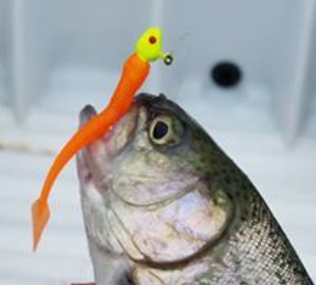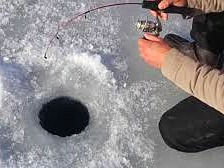How to Catch Trout Ice Fishing
- Frank Smith CEO
- Jan 7, 2017
- 4 min read

Rainbow trout, brooke trout, brown trout, and golden trout are active feeders under the ice. Aggressive fish are attracted to movement, which makes Freaky Frank's freaky worm an excellent choice for ice fishing. Frozen lakes, ponds, or mouths of tributaries provide opportunities for fisherman to capitalize on catching trout.
Trip Planning
Check the weather conditions, weather can make driving to your fishing location difficult but the fishing action is worth the drive. Visit the Division of Natural Resources for the latest trout stocking and choose a location from the stocked list. Lake maps are valuable resources for finding depth, structure, and under water points.
Finding a Trout Fishing Spot
Upon arriving at the location for the first time it can be difficult to find a productive fishing hole. Choosing a spot depends on the species of trout that are stocked. Every species of trout school differently according to structure, depth, and water temperature. Rainbow trout and golden trout are an open water schooling species. Fish for rainbows towards the middle of the lake, off of sharp breaks, or under water points near the middle of the lake. Brooke trout and brown trout school around structure. Schools of trout move around and its important to keep moving until you find the fish and establish a depth or structure pattern. Electronics is another useful method for locating fish, either by viewing the fish or locating structure. Using existing fishing holes can be productive.
Jig Fishing Method

Once a location has been found, start by drilling two holes about 6 to 8 feet apart. The first hole, rig a rod using a freaky worm on a 1/32 ounce jig head (like pictured) under a small bobber with the jig about three to four feet under the bobber, spray the worm with Frank's Trout Sauce. Drop the rig into the hole and prop up the rod. Watch the bobber while you fish the adjacent hole. The reason for this is that some trout like to cruise just under the ice. Rig the second rod with a 1/32 ounce jig head with a freaky worm and a small BB weight next to the head of the jig head, spray with Frank's Trout Sauce. Next drop the shimmy worm down the hole to the bottom, then pull the line up about two feet and place a small peg bobber on the line. Place the bobber in the water and it should sink slowly, adjust BB weights next to the jig head until the bobber is sinking slowly under the water. Jigging the freaky worm up off the bottom with a twitching method (no need to reel) until the bobber gets to the top of the water, then allow the bobber to fall slowly back until the bait hits the bottom (when the bobber stops the bait is on the bottom). "Trigger their aggression" by twitching the rod tip which intensifies the movement of the freaky worm's tail that trout just can't resist. Repeat for 10 to 20 minutes and if there isn't any action move locations. Change colors throughout the day until the trout consistently bite a color. From experience smoke hole white, boom boom pink, and buffalo orange are the colors that preform the best.
If trout are biting on top, then move both poles to the top. If fish are on the bottom use a slip bobber on the first rod and move the freaky worm just up off the bottom. Flurries of strikes come when the school has been located or passing through. If fish are being finicky add an additional spray of Frank's Trout Sauce and tip the hook with a wax or meal worm. By employing these two different fishing methods a pattern can be established and repeated to put more fish on the ice.
Fighting Trout & Ice

Trout just can't resist the Freaky Frank's freaky worm. When the bobber moves left, right, or down under the water, this indicates a strike. After setting-the-hook, the drag should be adjusted depending on the strength of line and how hard the trout is fighting. Before starting to reel take the peg bobber off of the line. A large trout can break the line by rubbing the edge of the ice. If the fish is rubbing the line on the ice, to prevent the line from breaking, keep constant pressure on the fish by reeling and putting the rod tip under the ice. When the trout surfaces it is easy to swing a small trout onto the ice. A large trout may require the use of hands to lip, slide a finger under the gill plate, or grab the trout by its side. Once the trout is on the ice, it's time to get back in the water after another fish while the school is around.
Conclusion
Fishing Freaky Frank's freaky worm in combination with these tactics will put more trout on the ice. Plan the fishing trip according to DNR stocking and weather. Dress warm, wear gloves, take a heater, and put time in on the ice. When you fish with Freaky Frank's, fish with confidence, the trout will bite just got to find the school. The best part about trout ice fishing is that they bite all day.
Change the way you fish!


























Comments